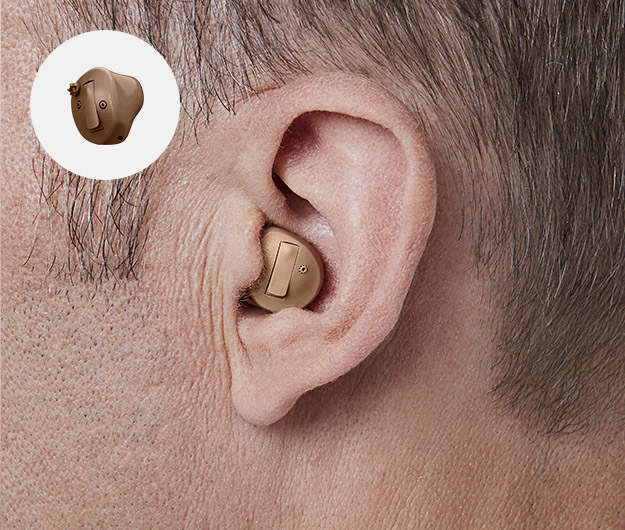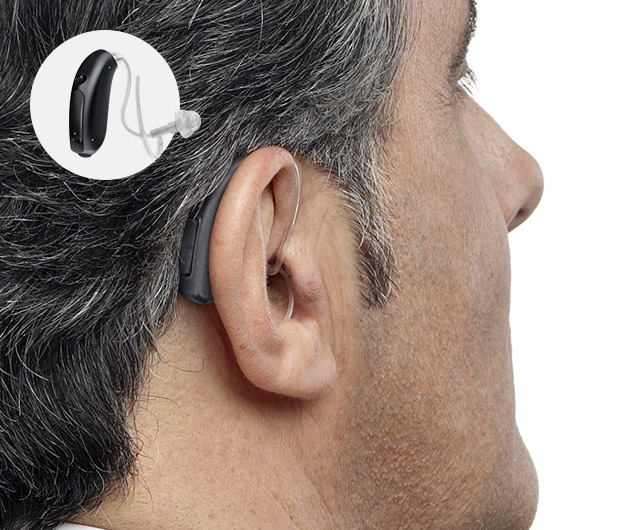These types of hearing aids are perfect for users with a more severe hearing loss or smaller ear canals. All the components in these types of hearing aids are housed behind the ear with a clear tube that connects the hearing aid to an earpiece that fits in your ear canal.
These types of hearing aids are a lot sleeker and slimmer than older, more traditional models and are great for people with less dexterity or visual impairment. While they are still also very discreet, they are not invisible, but they are powerful.
With this type of hearing aid, you can choose the colour of the housing from a range that you prefer.
There are three types of hearing aids that sit behind the ear, BTE, RIC/RITE and Open Fit. Below you will find an overview of each style.
Behind-the-ear hearing aids













